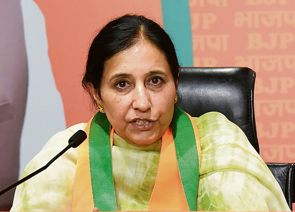
Push up: The dollar index rose by 1.7 per cent to 92.03 in April.
Jayshree Sengupta
The dollar is becoming more expensive and those who are planning to go abroad this summer must be prepared to dish out more rupees for buying dollars or euros to meet their holiday expenses. This will pinch many pockets whose budgets are limited. Similarly, those who are sending money to their children abroad for studies will also have to pay more rupees for each dollar. On the other hand, people receiving dollars from abroad will feel good because they will get more rupees.
From a year ago to date, at around Rs 66.82 to a dollar, the rupee has depreciated by 4.18 per cent against the dollar and from being the best-performing currency it has become the worst-performing currency in Asia.
The reason is obvious — the dollar is gaining strength on news of a robust economic recovery in the US. The dollar index that measures its strength against major global currencies rose by 1.7 per cent to 92.03 in April 2018. This trend is likely to continue in the future months when joblessness in the US is reduced further and GDP growth rises steadily sans inflation.
There has been an outflow of FIIs (Foreign Institutional Investment) from the Indian market which is linked to the rupee’s growing weakness and the dollar’s strength as well as many other factors related to the corporate performance of companies in India. Only recently, the corporate earnings have started showing stable higher earnings.
The RBI has already started to intervene in the forex markets to counteract the outflow and correct the volatility in the rupee’s value. This is evident from its reserves which have declined by $2.5 billion to $423.58 billion. It has tried with some success to bring stability in the market by injecting dollars, and the rupee has somewhat stabilised but, according to experts, the rupee is bound to slide more and get closer to Rs 70 per dollar.
A weak rupee will actually help exports because the dollar prices of Indian exportable goods will become lower which will increase the competitiveness of Indian products. Low interest rates, currently not favoured by the RBI, and weak currency are good for manufacturing growth and exports. It is good for our services exports and farmers also. But for infrastructure companies, especially power companies which import a lot of equipment, a weak currency is not a boon as import costs will go up. Also, those exports with significant import content as in the case of gems and jewellery will not do well as their cost will go up. India imports its huge gold requirements (700 to 800 tons) and raw semi-precious stones and pearls for its jewellery trade.
Foreign equity investors, on the other hand, would welcome a strong currency and low interest rates as it will increase the profits of companies and, therefore, the returns will be higher in dollar terms. For most people, however, a strong rupee is a sign of national economic strength. It indicates to them a healthy economy.
Thus the main point in favour of a weak rupee is the improvement of international competitiveness of Indian exports. According to the Economic Survey 2018, manufacturing industry has not made great strides reflected in the declining manufacturing export-GDP ratio and manufacturing trade balance.‘Make in India’ initiative has also suffered due to the low competitiveness of manufactures in global markets.
Indian economy’s competitiveness according to the Economic Survey has had to contend with real effective exchange rate appreciation of about 21 per cent since 2014 which means India’s exports have suffered and imports have flourished. This is because of the problem of “trilemma” that a country faces which has an open capital account, an independent monetary policy and an exchange rate objective.
India has an independent monetary policy and an exchange rate objective and an open capital account. Hence, it is facing the policy trilemma. Foreign institutional investments are allowed into India and their outflow from India is not controlled and policy makers can do little about it even though this is affecting the exchange rate.
When the rupee was appreciating against the dollar, there was a huge inflow of FIIs which was not controlled. But since February 2018, FIIs worth Rs 12,491.36 crore invested in equities left India and Rs 2,771.36 crore invested in debt instruments flowed out.
Many FIIs have not totally gone away from the Indian market and are waiting to see if the economy is recovering fast enough and whether the rise in oil prices is affecting the Current Account Deficit because India imports 70 per cent of its oil needs. India’s current account deficit, which is slated to be 1.7 per cent of the GDP this fiscal year, can get inflated, putting pressure on the rupee. Similarly, the fiscal deficit can get higher and stoke inflation which will lead to higher interest rates, not favoured by FIIs due to their adverse impact on industrial growth.
In general, FIIs are staying away from emerging markets. But in India’s case, the forthcoming general election is also creating volatility. It would be better if FIIs knew for sure that there would be a stable government at the Centre in 2019 and continuation of the same economic policies.
In all likelihood, India will have an open capital account in the future as it attracts foreign savings which provide additional funds for investment which will help growth. Also, the government, in all probability, will not intervene much in the forex market because a lower rupee will help export performance.
But a weaker currency will lead to further outflow of FIIs. In the likely scenario of the US raising its interest rates, there will be a further outflow towards the US bond market.
Hopefully, the export performance will improve because the rupee has also depreciated against the yuan by 13 per cent in the last one year and an increase in price competitiveness vis-à-vis China will reduce the huge trade deficit of $51 billion, which may help in correcting the rupee’s slide. In any case, India needs to have a robust manufacturing growth to make the government’s ‘Make in India’ successful and create jobs. Hence, the rupee’s slight fall is welcome.



























